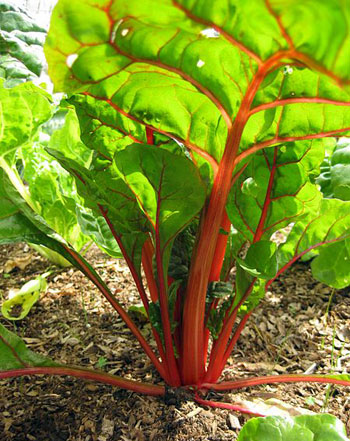Cool season vegetables to plant right now
Half of the garden can be planted before the end of May. See our list of best options.
In the Wonderful World of Vegetables, our 50 or so possible vegetables for Michigan gardens can be divided into two groups: cool season and warm season. Cool season vegetables can be planted when the soil has not warmed as much and there may be some cool nights. Warm season vegetable seeds will not germinate at those cool temperatures and a cold night would lay them low…permanently. Inexperienced gardeners only think about the air temperature when putting seeds or transplants in the garden. Smart gardeners realize that the air temperature is only part of the planting equation. Soil temperature is critical to success.
Both seeds and transplant roots will be very affected by the soil temperature. To determine the soil temperature, the soil in the top inch of the garden is checked with a thermometer. Purchase a soil thermometer or it is possible to use a kitchen thermometer that registers both hot and cold. The time to check the soil temperature will be early in the morning before the sun has warmed the soil. This is when you have the true temperature, not the sun-heated one. By now that smart gardener has the garden tilled and rows established with stakes and string. All that is needed is for the seeds to be sown.
Seeds that are put into soil that is too cold will not grow. If it is cold and damp for long enough, the seeds rot in place. The best opportunity for seed germination is when the soil is in the optimum temperature range for that vegetable. For example, parsley seeds could be planted when the soil is 40 degrees but optimum temperature range for seed germination is 50 to 75 degrees. This means the seeds are doing nothing until the soil is much closer to 75 degrees than to 40 degrees. Being first to plant does not necessarily mean you will be the first to harvest.
Michigan State University Extension educators are talking to people about cool season vegetable seeds that can go into the soil when the soil temperature is 50 degrees or above. These include: leaf lettuces, onions, parsnips, mustard greens, turnips, beets, peas, carrots, kohlrabi, cauliflower, radish, cabbage, spinach, peas, celery and Swiss chard. Kale and collards, which are cooking greens, can also be planted, but when the weather becomes hot, the kale will bolt or go to seed while the collards will not.

Swiss chard. Photo credit: Raffi Kojian, Wikimedia Commons
Since it is rare for a gardener to grow or even like all 50 vegetables, do some research on your vegetable garden choices, because the better you can treat them, the better your crop will be.
Long ago, Grannie always told us to go to the Memorial Day Parade in town and then come home and plant the garden. That still usually works for the warm season ones. But get the others in now so there is less to do after the big parade.
For more information on a wide variety of smart gardening articles, or to find out about smart gardening classes and events, visit www.migarden.msu.edu. You can contact the MSU Master Gardener Lawn and Garden Hotline at 888-678-3464 with your questions.



 Print
Print Email
Email




